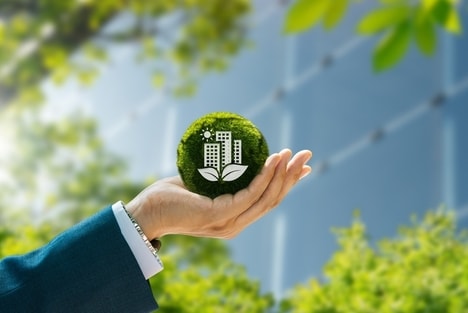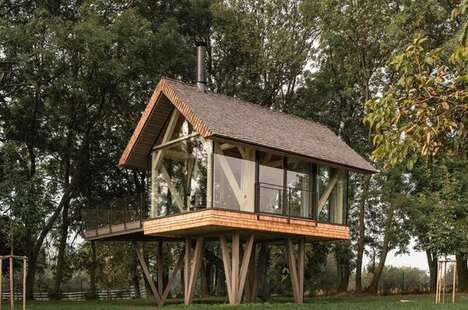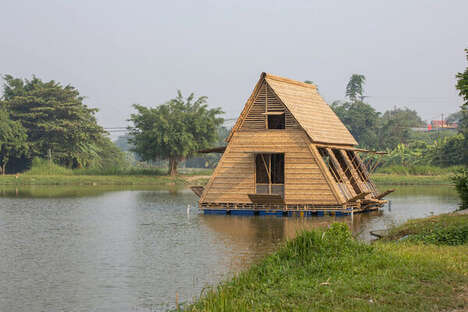Innovations in Green Building

The real estate sector stands at a pivotal moment in its evolution. As environmental awareness grows and climate concerns intensify, sustainable building practices have transitioned from aspirational concepts to business necessities. Today, we explore the cutting-edge innovations reshaping green building and creating a new paradigm for sustainable real estate development.
The Green Building Transformation
The sustainable real estate market is experiencing remarkable growth, driven not only by environmental imperatives but by compelling business advantages. Market analysis consistently shows that green-certified buildings outperform their conventional counterparts in terms of rental premiums, occupancy rates, and resilience against market fluctuations.
Today's innovative developments go beyond mere ecological efficiency -- they represent a complete reimagining of how built environments integrate with natural systems. The most forward-thinking projects consider the entire lifecycle of a building, from material sourcing to eventual demolition or repurposing, creating structures that minimize harm while maximizing both environmental and economic benefits.
Beyond Net-Zero: The Rise of Regenerative Design
While net-zero buildings (those producing as much energy as they consume) represented a significant achievement in sustainable design, today's vanguard developments are embracing regenerative design principles. These projects aim to actively restore and enhance their surrounding ecosystems rather than simply minimizing harm.
Leading examples of this approach incorporate several key elements:
- Advanced rainwater harvesting and water management systems
- Integrated renewable energy solutions that often produce surplus energy
- Vertical gardens and biodiverse landscapes that support local ecosystems
- Biophilic design elements that connect occupants with nature
Mass Timber Revolution
Cross-laminated timber (CLT) and other engineered wood products are revolutionizing construction possibilities. Mass timber buildings are rising across major cities worldwide, with notable examples including the Ascent building in Milwaukee—an 86.6-meter, 25-story residential tower recognized as the world's tallest mass timber hybrid structure.
Mass timber construction offers numerous benefits as a sustainable alternative to conventional materials, including reduced carbon footprint, faster construction timelines, and natural carbon sequestration properties. Additionally, exposed wood elements create biophilic environments that have been linked to improved occupant wellbeing.
AI-Driven Building Management Systems
Artificial intelligence is transforming building operations, creating significant advancements in energy management and operational efficiency. Modern building management systems leverage machine learning algorithms to analyze patterns in energy usage, occupancy, and environmental conditions.
These intelligent systems go beyond simple automation, adapting to changing conditions and learning from historical data to optimize performance continuously. The result is buildings that not only use less energy but provide better comfort for occupants—a win-win for sustainability and user experience.
Material Innovation: From Waste to Resource
Some of the most promising innovations in sustainable real estate are occurring in building materials:
- Low-carbon concrete alternatives: Companies like CarbonCure are developing technologies that inject captured CO₂ into fresh concrete, where it mineralizes and becomes permanently embedded while strengthening the material.
- Bio-based insulation: Natural materials derived from agricultural byproducts and fungal mycelium are emerging as sustainable alternatives to petroleum-based insulation products.
- Circular material solutions: Innovative approaches to recycling and upcycling construction waste are creating new pathways for reducing the industry's environmental footprint.
The most exciting innovations are emerging from unexpected places, with interdisciplinary collaborations yielding remarkable results. Waste streams from one industry are becoming valuable inputs for construction materials, effectively closing resource loops that have been open for centuries and creating new value chains in the process.
The Integration Challenge
Despite these innovations, widespread adoption faces significant hurdles. Fragmentation within the building industry, regulatory complexities, and initial cost concerns continue to slow implementation. However, pioneering projects demonstrate that integrated approaches -- considering sustainability from the earliest design phases—deliver the best results both environmentally and economically.
The Future of Green Building
Looking ahead, several trends appear poised to define the next wave of sustainable real estate:
- Digital twins and simulation-based design: Creating virtual replicas of buildings before construction allows for precise optimization of everything from solar exposure to material usage.
- Performance-based financing: New financial instruments that tie funding terms to actual sustainability outcomes rather than promised features.
- Climate resilience integration: Green buildings increasingly incorporate features to withstand extreme weather events, ensuring longevity and protecting investment value.
- Community-scale solutions: Moving beyond individual buildings to create sustainable neighborhoods with shared resources and infrastructure.
As these trends converge, sustainable real estate is evolving from isolated showcase projects to the new industry standard. For developers, the message is clear: embrace innovation now or risk building tomorrow's stranded assets today.
The fundamental question facing the industry has shifted dramatically. It's no longer about whether sustainable development makes business sense, but whether traditional development approaches can remain viable in a market increasingly defined by carbon constraints, regulatory pressures, and changing consumer expectations. The evidence increasingly suggests they cannot.
For forward-thinking developers and investors, this transition represents not just a challenge but perhaps the greatest opportunity in real estate's history -- the chance to create built environments that generate lasting value while addressing one of humanity's most pressing challenges.
For more industry insights, check out Trend Hunter's free 2025 Trend Report.


